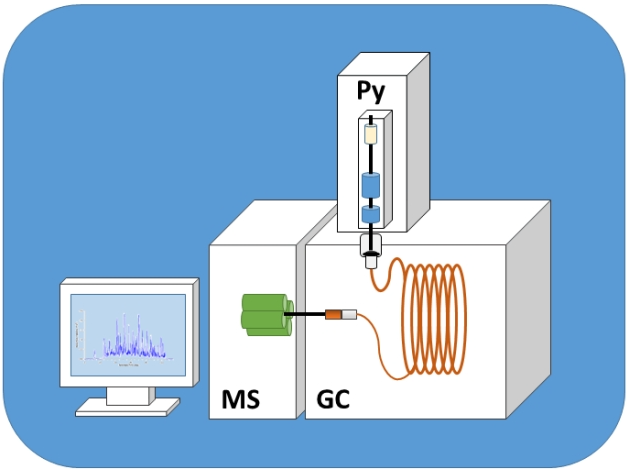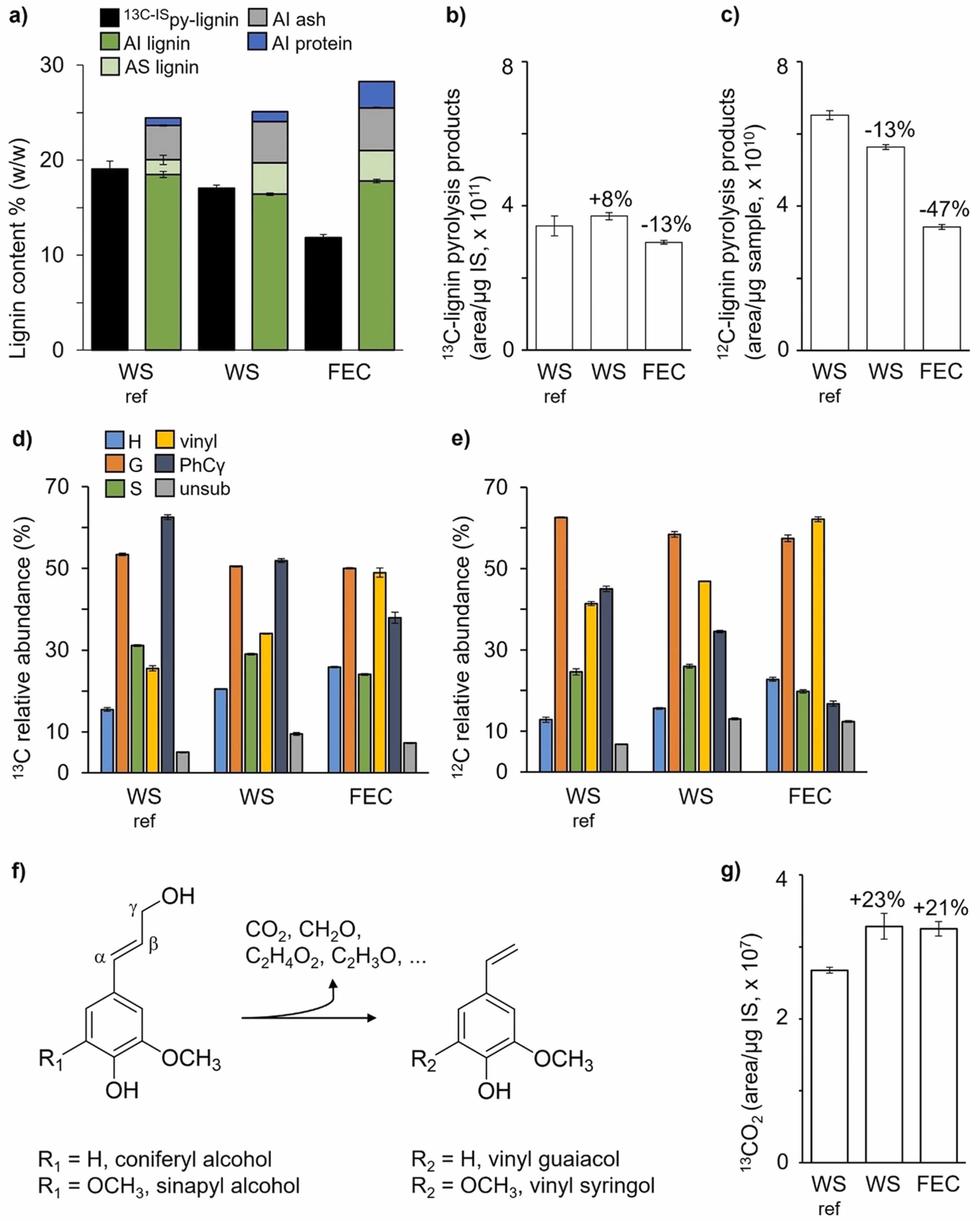Pyrolysis-GC-MS Analytical Service
Pyrolysis-Gas Chromatography-Mass Spectrometry (Pyrolysis-GC-MS) is an advanced analytical platform that integrates thermal decomposition with chromatographic and mass spectrometric detection. It is particularly well-suited for analyzing high-molecular-weight, non-volatile, and structurally complex substances such as polymers, organic macromolecules, and biomass materials. During pyrolysis, samples are rapidly heated under an inert atmosphere to break down into smaller volatile components, which are subsequently separated by gas chromatography (GC) and accurately identified via mass spectrometry (MS).
This technique addresses the limitations of traditional GC-MS in analyzing crosslinked, insoluble, or highly polymerized substances. Pyrolysis-GC-MS is widely applied in polymer characterization, environmental pollutant monitoring, forensic investigations, microplastic analysis, and archaeological material studies.
Leveraging a high-sensitivity Pyrolysis-GC-MS platform and a skilled analytical team, MtoZ Biolabs offers end-to-end Pyrolysis-GC-MS Analytical Service tailored to the needs of academic and industrial clients, enabling comprehensive molecular structure and composition elucidation.
Technical Principles
During Pyrolysis-GC-MS, the sample is introduced into a pyrolysis unit and thermally decomposed within seconds at 400°C–1000°C under an inert gas atmosphere (typically helium, with nitrogen or argon as alternatives). The resulting pyrolyzates are then separated by gas chromatography and detected by mass spectrometry based on their mass-to-charge (m/z) ratios. These data are used to infer the structural and compositional features of the original material.

Picó, Y. et al. Trends Anal. Chem. 2020.
Figure 1. Pyrolysis-GC-MS System Overview
Key Advantages
· Broad sample compatibility: Suitable for virtually all solid samples, including insoluble powders, coatings, composites, and polymers.
· Low sample preparation requirements: Enables high-throughput screening with minimal pretreatment.
· Excellent for crosslinked and non-volatile polymers: Overcomes limitations of conventional GC-MS in analyzing such materials.
· High sensitivity: Microgram-level samples provide reliable and reproducible data, ideal for trace-level component detection.
Limitations
· Complex pyrolyzate interpretation: Requires expert knowledge and database support to accurately interpret fragmentation patterns.
· No particle size information: Pyrolysis-GC-MS does not provide granularity data, necessitating complementary techniques (e.g., FTIR, Raman) in microplastic analysis.
· Inorganic detection limitations: Primarily sensitive to organic compounds; inorganic constituents are not detected effectively.
· Destructive process: Pyrolysis irreversibly decomposes the sample.
Why Choose MtoZ Biolabs?
MtoZ Biolabs offers fully integrated Pyrolysis-GC-MS Analytical Service covering sample receipt, pyrolysis programming, GC-MS operation, and advanced data interpretation. Our key advantages include:
✅ Cutting-edge instrumentation: Equipped with high-resolution Pyrolysis-GC-MS systems and programmable pyrolysis modules for reliable and reproducible results.
✅ Customized analytical design: Tailored pyrolysis conditions and data workflows based on sample type and study goals.
✅ Expert interpretation: All spectra are analyzed by experienced scientists to ensure rigorous and accurate structural insights.
✅ Comprehensive reporting: Includes structural annotations, quantitative findings, and thermogram profiles suitable for publication or regulatory documentation.
✅ One-time-charge: Our pricing is transparent, no hidden fees or additional costs.
Applications
Pyrolysis-GC-MS Analytical Service is highly effective for resolving analytical challenges across a broad range of scientific and industrial fields:
· Polymer and additive characterization: Identification of monomers, co-monomers, antioxidants, plasticizers, and crosslinkers.
· Microplastics analysis: Qualitative and quantitative detection of microplastics in water, sediments, and wastewater.
· Environmental and soil contaminant studies: Detection of trace-level organic pollutants and their degradation pathways.
· Forensic materials identification: Analysis of unknown substances and reconstruction of pyrolysis product origins.
· Biomass and natural product profiling: Investigation of thermal degradation patterns in cellulose, lignin, algae, etc.
· Material aging and failure analysis: Detection of degradation products to understand deterioration mechanisms.
Case Study
Case 1: Overcoming Lignin Quantification Challenges in Complex Matrices Using Pyrolysis-GC-MS
In a study, researchers developed a Pyrolysis-GC-MS method employing uniformly ¹³C-labeled lignin as an internal standard to achieve accurate quantification of lignin in complex samples such as animal feed and feces. Inorganic matrix components (e.g., ash) interfered with pyrolysis behavior, resulting in underestimation. Through aqueous pretreatment, interference was reduced, and quantification precision significantly improved. This method supports accurate lignin analysis in biomass degradation and digestive tract studies.

Veersma, R. J. et al. J. Anal. Appl. Pyrolysis. 2024.
MtoZ Biolabs provides precise quantification and characterization of lignin and other pyrolyzates in complex biological and environmental matrices using Pyrolysis-GC-MS Analytical Service.
FAQ
Q1: Can this service accommodate liquid or biological samples?
Yes. While pyrolysis is conventionally applied to solid samples, MtoZ Biolabs provides freeze-drying, solid-phase adsorption, and other sample preparation techniques to enable pyrolysis of liquids and biospecimens for environmental, food, and biomass analysis.
Q2: Is there a risk of information loss during pyrolysis?
Since pyrolysis is a destructive process, thermally labile compounds may degrade or recombine. To mitigate this, we implement optimized temperature programming and staged pyrolysis strategies to maximize structural information retention.
Q3: Can Pyrolysis-GC-MS detect inorganic components or particle sizes?
No. This method is limited to organic compounds. For elemental or particle size analysis, we offer supplementary platforms such as ICP-MS and FTIR to create a complete analytical dataset.
MtoZ Biolabs’ Pyrolysis-GC-MS Analytical Service enables sensitive, high-throughput structural analysis of challenging organic samples. With tailored protocols, expert interpretation, and state-of-the-art instrumentation, we support the rapid advancement of your research and industrial objectives. Contact us today for a customized consultation.
How to order?







